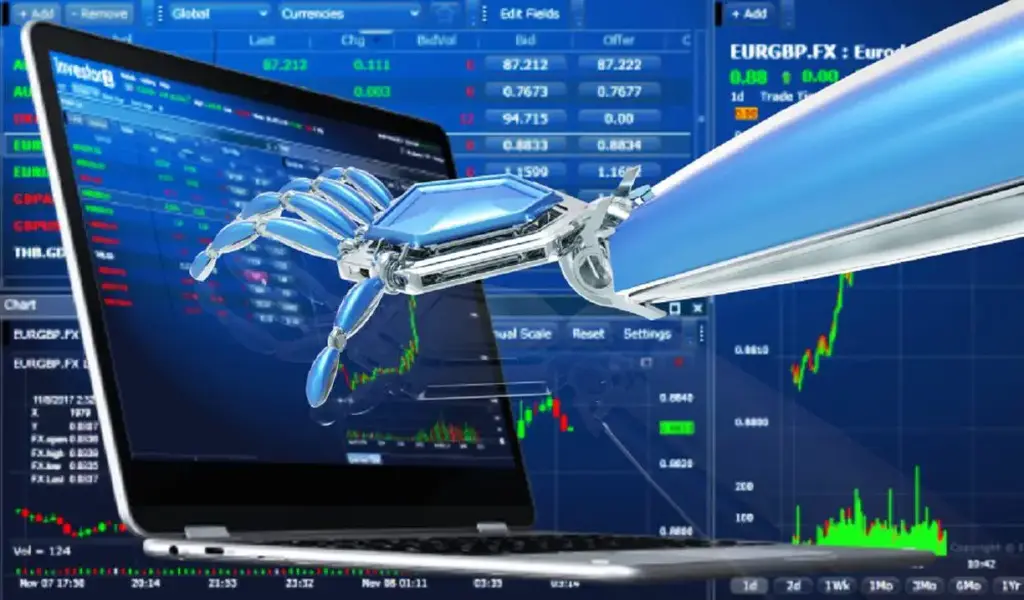Algorithmic trading, commonly referred to as automated trading or algo trading, is a computerized method of purchasing and selling assets on financial markets.
Mathematical algorithms are used in this technology-driven trading approach to monitor market movements and carry out deals automatically without human involvement.
In this article, we will discuss the benefits and risks, the types of trading strategies, and the factors to consider when selecting an automated trading platform. If you are planning to invest in Bitcoin, visit bitcoin trader 2 website.
Advantages of Automated Trading
Speed and Efficiency: Automated trading algorithms can execute trades much faster and more efficiently than humans. This is because the algorithms can analyze vast amounts of market data in real time and identify profitable trading opportunities within seconds. This speed and efficiency can help traders take advantage of fleeting market trends and make more profitable trades.
Reduced Emotional Bias and Increased Objectivity: They do not experience the emotional biases that can cloud human judgment. They make decisions based solely on data, which reduces the risk of making emotional or irrational trading decisions. This increased objectivity can lead to more consistent and profitable trading outcomes.
Enhanced Risk Management and Portfolio Diversification: They can be programmed to manage risk and diversify portfolios automatically. They can set stop-loss orders to limit potential losses, and they can also allocate funds across different assets and markets to diversify portfolios and minimize risks.
Ability to Backtest and Optimize Trading Strategies: They allow traders to backtest and optimize their trading strategies. This means that traders can test their algorithms on historical data to see how well they would have performed in the past. This information can help traders refine their strategies and improve their chances of success.
Types of Automated Trading Strategies
Trend-following strategies: These algorithms identify trends in market data and execute trades based on those trends.
Mean-reversion strategies: These algorithms look for assets that are overbought or oversold and execute trades to take advantage of market corrections.
Arbitrage strategies: These algorithms look for price discrepancies between different markets and execute trades to exploit those price differences.
High-frequency trading strategies: These algorithms execute trades in fractions of a second based on real-time market data.
Factors to Consider When Selecting an Automated Trading Platform
Reliability and Security: Traders should select a platform that is reliable and secure. This means that the platform should have a proven track record of uptime and security, and it should use encryption and other security measures to protect traders’ data and funds.
Customization Options: Traders should select a platform that allows for customization of trading strategies. This means that traders should be able to adjust the parameters of their algorithms to suit their unique trading styles and goals.
Backtesting and Optimization Tools: Traders should select a platform that offers robust backtesting and optimization tools. This means that traders should be able to test their algorithms on historical data and optimize them to improve their performance.
Risks and Limitations of Automated Trading
Automated trading is not without risks and limitations, and traders should be aware of these factors before relying solely on algorithmic trading. Some of the potential risks and limitations of automated trading include:
Technical Failures: They are vulnerable to technical failures, such as hardware or software malfunctions, connectivity issues, or power outages.
Market Volatility: They rely on pre-programmed instructions to execute trades, which means they may not be able to respond quickly enough to sudden market changes or unexpected events.
Over-Optimization: They can be optimized to perform well under certain market conditions or historical data, but may not perform as well in new or unpredictable market conditions.
Lack of Human Oversight: They do not have the ability to make subjective decisions or adjust to changing market conditions based on intuition or experience.
Cybersecurity Threats: They are vulnerable to cyberattacks, which can compromise the security of the system and result in loss of data or funds.
Conclusion
In conclusion, traders aiming to increase their effectiveness, accuracy, and profitability may find automated trading to be a potent instrument.
The possible risks and drawbacks of this strategy, such as technical failures, market volatility, over-optimization, a lack of human oversight, cybersecurity concerns, and legal and regulatory problems, must be understood, though. Traders should use the proper risk management techniques to reduce these hazards.
Related CTN News:
How To Change Your Homepage On Chrome – A User-Friendly Guide!
Download And Install The TapTap APK For An Enhanced Gaming Experience!
YouTube TV Announced Pricing For Its New NFL Sunday Ticket Package
⚠ Article Disclaimer
The above article is sponsored content any opinions expressed in this article are those of the author and not necessarily reflect the views of CTN News






